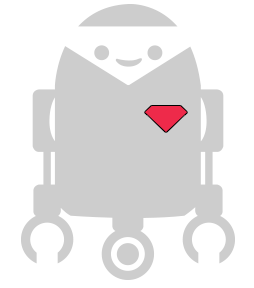Sales Force Sphero
First, let's import Cylon:
var Cylon = require('cylon');
With that done, let's define the Robot we'll use to communicate with Salesforce:
Cylon.robot({
name: 'salesforce',
connections: {
sfcon: {
adaptor: 'force',
sfuser: process.env.SF_USERNAME,
sfpass: process.env.SF_SECURITY_TOKEN,
orgCreds: {
clientId: process.env.SF_CLIENT_ID,
clientSecret: process.env.SF_CLIENT_SECRET,
redirectUri: 'http://localhost:3000/oauth/_callback'
}
}
},
devices: {
salesforce: { driver: 'force' }
},
work: function(my) {
my.salesforce.on('start', function() {
my.salesforce.subscribe('/topic/SpheroMsgOutbound', function(data) {
var msg = "Sphero: " + data.sobject.Sphero_Name__c + ",";
msg += "Bucks: " + data.sobject.Bucks__c + ",";
msg += "SM_Id: " + data.sobject.Id;
console.log(msg);
var sphero = Cylon.robots[data.sobject.Sphero_Name__c];
sphero.react();
});
});
}
});
Next up, the shape our Sphero Robot will take:
Cylon.robot({
name: 'ROY',
connections: {
sphero: { adaptor: 'sphero' }
},
devices: {
sphero: { driver: 'sphero' }
},
react: function() {
this.sphero.setRGB(0x00FF00);
this.sphero.roll(90, Math.floor(Math.random() * 360));
},
work: function(my) {
console.log('Setting up collision detection.');
my.sphero.detectCollisions();
my.sphero.stop();
my.sphero.setRGB(0x00FF00);
my.sphero.roll(90, Math.floor(Math.random() * 360));
my.sphero.on('collision', function() {
my.sphero.setRGB(0x0000FF, my);
my.sphero.stop();
var data = JSON.stringify({
spheroName: my.name,
bucks: "" + (my.totalBucks++)
});
var sf = Cylon.robots.salesforce;
sf.devices.salesforce.push('SpheroController', 'POST', data);
});
}
});
Now that our robot knows what work to do, and the work it will be doing that hardware with, we can start it:
Cylon.start();




